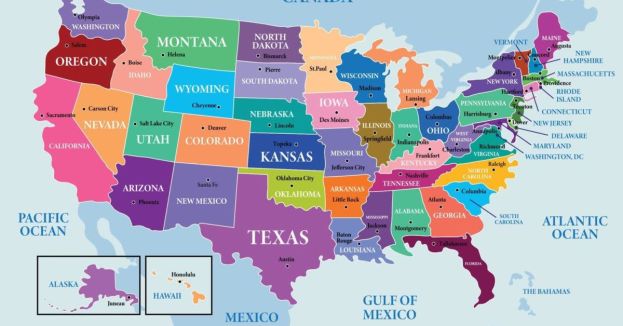The National Parks Conservation Association (NPCA), an independent advocacy group, has identified four of the state's parks as having the highest ozone levels in the nation. Sequoia and Kings Canyon National Parks are at the top of this list, grappling with air quality that poses a health risk. Concurrently, wildfires, drought, and rising sea levels are wreaking havoc on state parks, which make up nearly a quarter of California's coastline, as per a separate report by the California State Parks Foundation.
Ulla Reeves, interim director for NPCA’s clean air program, expressed disappointment at California's performance in the Polluted Parks report. Joshua Tree National Park was ranked as the second most ozone-polluted park, followed by Mojave National Preserve and Yosemite National Park. Death Valley National Park came in sixth, just below Carlsbad Caverns National Park in New Mexico.
WATCH: UCLA PROTESTORS LOST THEIR MIND CALLING THE UNIVERSITY A VIOLENT INSTITUTION![]()
Reeves noted that while air pollution in California is not surprising, the impact on the state's natural landmarks like sequoias and Joshua trees is disproportionately severe. These iconic trees are among the millions across the state succumbing to the intensifying effects of wildfires, severe drought, extreme heat, disease, and other stressors exacerbated by global warming.
WATCH: TRUMP'S ATTORNEY FACING INDICTMENT IN ARIZONA![]()
California's pollution sources, which include car-dependent population centers like Los Angeles, agricultural and industrial operations in the San Joaquin Valley, trucking and warehouse facilities in the Inland Empire, and the bustling ports complex in Los Angeles and Long Beach, do not respect park boundaries and contribute to the degradation of these wilderness areas.
DRAMATIC COURTROOM TWIST: WIFE OF ACCUSED 'CLIFF-DRIVER' MAKES DESPERATE PLEA FOR HUSBAND![]()
March 29, 2024
The report evaluated nearly 400 parks based on three main air quality categories — unhealthy air, harm to nature, and hazy skies. It also examined four primary climate change threats affecting parks — wildfire, drought, sea level rise, and invasive species. The data used in the report was sourced from the National Park Service but was not reviewed by the agency's staff.
MICHAEL RAPAPORT FURIOUS AFTER SHOW GETS CANCELED![]()
Despite the grim findings, the report also highlighted some improvements. Several measures of air quality have improved over time, with the number of parks with significant concern levels in at least one of the air quality conditions dropping from 96% to 70%. Significant concern levels for unhealthy air dropped by 52%, while hazy skies plummeted 94%, which the report attributes to the implementation of several clean air regulations.
IS MCDONALD'S BECOMING THE NEW CHAMPION OF AFFORDABILITY?![]()
However, 97% of national parks are still experiencing significant or unsatisfactory levels of concern from air pollution. California, in particular, has not seen the same improvements as the rest of the country. The state is home to four of the national parks with the haziest skies, with Sequoia and Kings Canyon once again claiming the top slot. Death Valley, Pinnacles, and Channel Islands National Park also made the top 10 list.
HOT OFF THE PRESS: DAILY CALLER OBTAINS SECRET GAG ORDER![]()
The report also found that 57% of national parks are experiencing serious concerns related to climate change. While invasive species were identified as the primary climate threat facing national parks across the nation, California parks are disproportionately at risk of wildfires — the second-leading threat.
NEED TO SEE TO BELIEVE: DISGRACED BALTIMORE DA MARILYN MOSBY'S PLEA FOR MERCY (WATCH)![]()
As of 2022, half of the state’s 20 largest fires ignited over the previous five years. About 4% of the state burned in 2020 alone, the worst fire season on record. Both national and state parks have paid the price.
The York fire last year torched an untold number of Joshua trees in the Mojave National Preserve — on top of those incinerated in the 2020 Dome fire, turning a portion of the preserve into a “graveyard of Joshua tree skeletons,” according to the National Park Service. More of the iconic desert trees were mowed down by another 2020 fire in Arthur B. Ripley Desert Woodland State Park.
TRUMP HINTS AT WHAT TO EXPECT IF HE LOSES 2024![]()
Between 2020 and 2021, three fierce wildfires are estimated to have killed 19% of all giant sequoias in their limited range in the Sierra Nevada mountains, which includes parts of Sequoia and Kings Canyon National Parks and Sequoia National Forest. Sequoias need fire to reproduce, but the supercharged blazes of recent years have become lethal to the trees already weakened by drought and bark beetles.
Many ancient redwoods were seared in a 2020 fire that devastated 97% of Big Basin Redwoods State Park, the oldest state park, according to the state parks foundation report.
Compared to the 2019 Polluted Parks report, there was no improvement in the harm to nature category. The evaluation is based on levels of sulfur and nitrogen that make their way into soil and water, as well as ozone pollution’s impact on trees and plants.
For the harm to nature category, 69% met the criteria for significant concern, with nitrogen deposition playing an outsize role. Nitrogen and sulfur, which are washed out of the sky by precipitation, can contaminate soil and water. High levels of nitrogen can trigger algal blooms and kill fish, the report notes.
Reeves said the report provides another lens to see how climate change and air pollution are wreaking havoc on the world, “because not only are our communities and people experiencing these problems, but these places that we love, and that we want to protect.”
Hopefully, she said, the dire findings in the report will motivate people to do more to safeguard national parks for future generations.
Recommendations in the report include finalizing new vehicle emission standards, as well as establishing air quality standards for ozone and fine particulate matter specifically to protect scenic views and nature.
The report also suggests amending regulations intended to improve visibility in national parks across the country, known as the Regional Haze Rule, to address flaws — and holding polluters accountable for their negative impacts on parks.
Rachel Norton, executive director of California State Parks Foundation, made the case that state parks can provide a solution to climate change woes.
California State Parks, the agency overseeing the state park system, manages an astounding 1.6 million acres of land. Norton described the parks as a “lever that the state really has full control over.”
While California can’t pass laws that govern national parks, it can make budget decisions for its own parks, she said. The state parks foundation in its recent report advocates spending tens of millions of dollars to address wildfire and sea-level rise at the parks, as well as hiring permanent staff to work on climate change-related efforts.
“And if [the state] chooses to not invest, and not see these places as essential and critical to the success of our climate goals, then we might fail,” she said. “And that’s kind of unthinkable.”








 Discover alternative ideas that will make you think
Discover alternative ideas that will make you think Engage in mind bending debate
Engage in mind bending debate Earn points, rise in rank, have fun
Earn points, rise in rank, have fun


